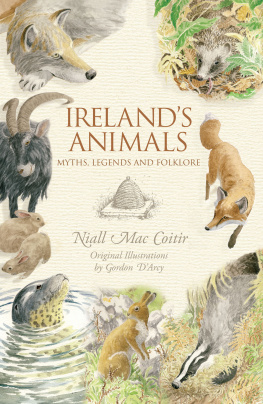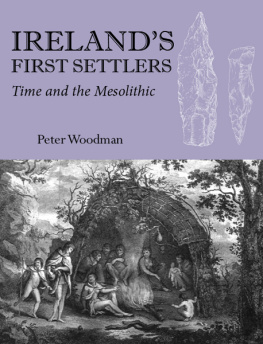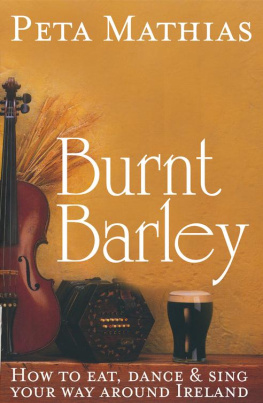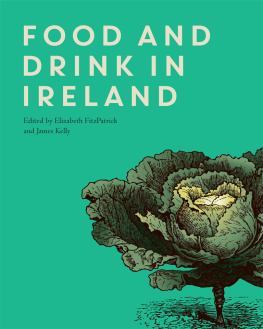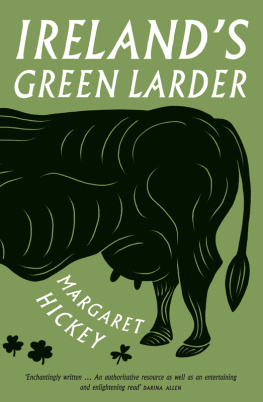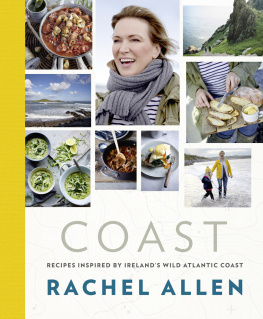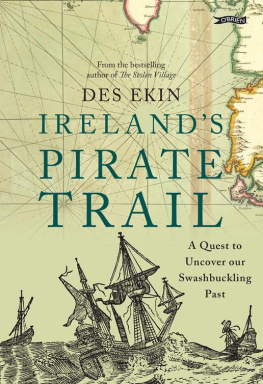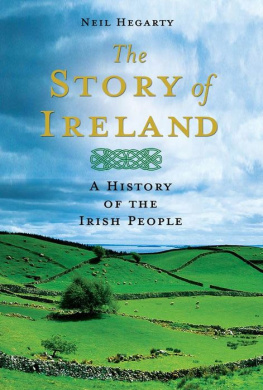INTRODUCTION
I first met Margaret Hickey in London, when I was at a very exciting stage in my career. I had just acquired my first restaurant, The Lindsay House in Soho, and, being a true Irishman, I made space on my walls for some photographs of literary heroes, such as Brendan Behan and James Joyce. She was an editor at the time, at Country Living magazine, and, being always interested in all things Irish, she wrote a profile of me Young, Gifted and Green which highlighted my philosophy of food. I still live by it today. I was brought up in rural Ireland and I experienced from my earliest days the value of great, honest ingredients and a respect for the land, the rivers and the seas and the creatures that live in them.
When I learned that Margaret was writing a history of Ireland through food and drink, I was delighted to discover that the story of untold generations would now be told. The history of Ireland is often tragic, but even in the very worst times, the people had a resilience and a depth of character that helped them survive. The Irish spirit is proud and resourceful, and that is reflected in the ways in which food and drink is produced and how it is presented on the table. A cake of soda bread, a block of golden farmhouse butter, some prime Irish grass-fed beef, a head of green cabbage and a slab of one of Irelands award-winning cheeses these are the stuff that dreams are made of each pure and untampered with.
Irelands Green Larder is a tribute to the people of Ireland, and particularly to both small and tenant farmers, who worked hard and honestly to grow some of the best food on the planet. Its a history book with a few recipes included, it is lively and full of fascination and one I know Ill be dipping into often over the years. Its the only book on the social history of Ireland that youll ever need!
Richard Corrigan
November 2017
CHAPTER ONE
PANORAMA
Tell me what you eat, and I will tell you what you are.
Jean Anthelme Brillat-Savarin
The island of Ireland is so small you can drive across it in a few hours and its population is much the same as that of, say, Croatia. For the greater part of its history, the religion, language and culture of Irelands indigenous people were suppressed, and for centuries the poverty of the landless population was as acute as any in Europe. Yet over those same centuries it became the cradle of literature, music and dance, of politicians and soldiers, of philosophers and saints, of boozers and brawlers, and managed to be world class in all categories. How has this small country managed to achieve so much against all the odds? It can hardly be put down to the mythical luck of the Irish.
Identifying the DNA of Irish culture is a challenge that offers many points of departure, but however you look at it, they all ultimately depend on the irreducible human needs for shelter from the storm and a crust of bread. What is put on a plate reveals much about a nation. Food in Ireland is far more than a body fuel every cake of soda bread, every jug of buttermilk, every piece of bacon tells a story of the land and its people, a story that recedes into our unrecorded past. Stripped of all but the essential, each of us is, in essence, Lears poor, bare, forked creature. In the Irish context, Lear could translate into Sweeney, the mad king who endured the storm and who, according to Flann OBriens affectionate parody in At Swim-Two-Birds , feasted on cresses and nettles.
One aspect of that story is located along lines of latitude and longitude. The height of a mountain, the prevailing wind, rains that fall or droughts that persist, the clagginess or sandiness of the soil externals such as these shape our lives. In many parts of Ireland, dense hedges of whitethorn and little fields bounded by unmortared rocks tell of survival wrested from tiny parcels of land, and the lichen-mottled but enduring stone of the dolmen, the round tower and the Celtic cross set you in a landscape that has changed little since the days of Brian Boru, the tenth-century High King of Ireland. The four basic farm animals of today, the cow, the sheep, the pig and the horse, are the same as they were in the seventh century.
Rural Irelands unmediated connection with the fundamentals of life seems blessedly anomalous in the twenty-first century. If I step outside at night, here, just west of the Shannon, I see a black sky perforated by a million stars, free of light seepage from streetlamps or neon signs. Some mornings in spring, I spot a leveret helping himself to my sorrel and lettuces, within a few feet of the house, or I might disturb a pheasant, sending it clattering away into the trees. Deer are so plentiful in my patch of Ireland that they have to be culled. Elderflowers, wild garlic and blackberries can be gathered from trees and hedgerows round here with no noxious spraydrift having settled on them. In autumn, mushrooms spring up in fields and woods; even in winter the fat scarlet hips of Rosa rugosa or thorn trees provide food for wild creatures. Ireland is a food island of plenty.
An island of plenty for some, of course, but not for all. The single most important thing to remember about food in Ireland is that, for most of the people most of the time, there just was not enough of it to eat. The old truism that life lurches from famine to feast was particularly relevant to the Irish. Often, obscenely, people close to starvation had food but dared not eat it, because the rent money came from selling it.
An Outline
The story of food is always political and in Irelands case intensely so. Significantly, the country never came under the thrall of the Roman Empire. Agricola, Roman governor of Britain from AD 77 to 84, had planned to conquer the Irish Celts (Scotii) for they were always a thorn in his side, regularly sending raiding parties in armed ships in search of plunder and slaves. But circumstances prevented it, and Ireland remained largely untouched by the outside world until the coming of Christianity, leaving aside occasional visiting traders, the Phoenicians among them.
In fact, until the discovery of America, Ireland was just a small island on the far west of the known world, although, out of all proportion to its size, it had had great influence on Europe during the early Christian period. Its wandering monks brought many skills to the countries in which they settled, including introducing cheese-making techniques to Switzerland and parts of France. But with the passing of those early days of Celtic Christianity, Ireland became more closed in on itself. Under the influence of various outsiders the Vikings, the Normans and pre-eminently the British the east and south-east coasts knew some development, but the lives of most people were untouched by great upheavals happening in Europe. Even during the nineteenth century, while much of Britain underwent convulsions that marked the change from a rural to an industrialised society, Ireland had almost no factories and the economy remained predominantly agricultural.


